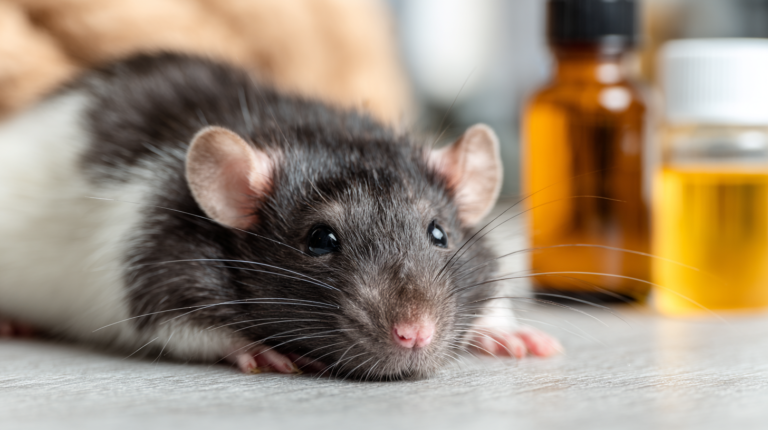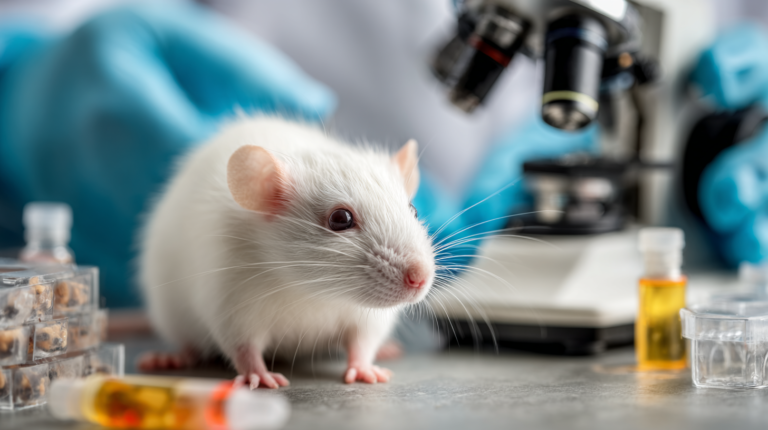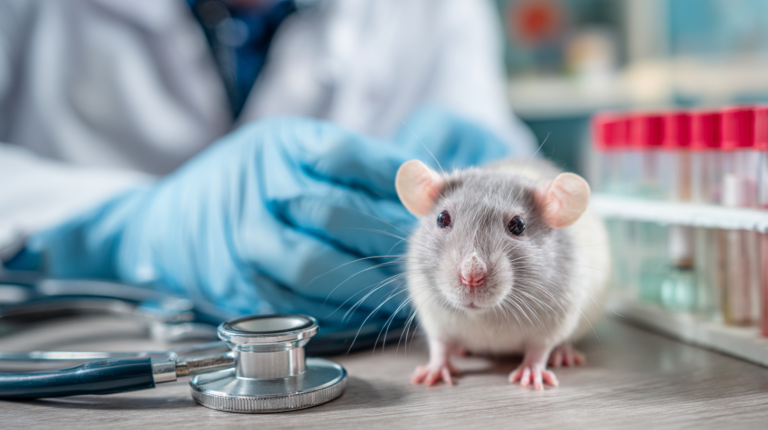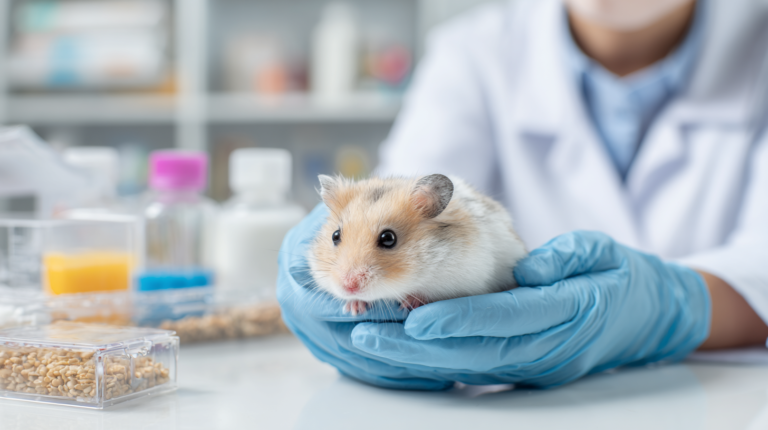Discover the 5 key signs of diabetes in rodents and effective diet management strategies. Expert veterinary advice for hamsters, rats, mice, and guinea pigs.
Table of Contents
When most pet owners think about diabetes, they typically envision dogs or cats struggling with blood sugar regulation. However, diabetes in rodents is a surprisingly common yet often overlooked condition that affects beloved pocket pets including hamsters, rats, mice, gerbils, and guinea pigs. This metabolic disorder can significantly impact your small companion’s quality of life, but with proper recognition and management, diabetic rodents can live fulfilling lives.
Understanding diabetes in rodents requires recognizing that these small mammals have unique physiological needs and responses to blood sugar fluctuations. Unlike larger pets, rodents have faster metabolisms and smaller body reserves, making early detection and intervention crucial for successful management. This comprehensive guide will equip you with the knowledge to identify the warning signs, implement effective dietary strategies, and provide optimal care for your diabetic rodent companion.
Understanding Diabetes in Small Mammals
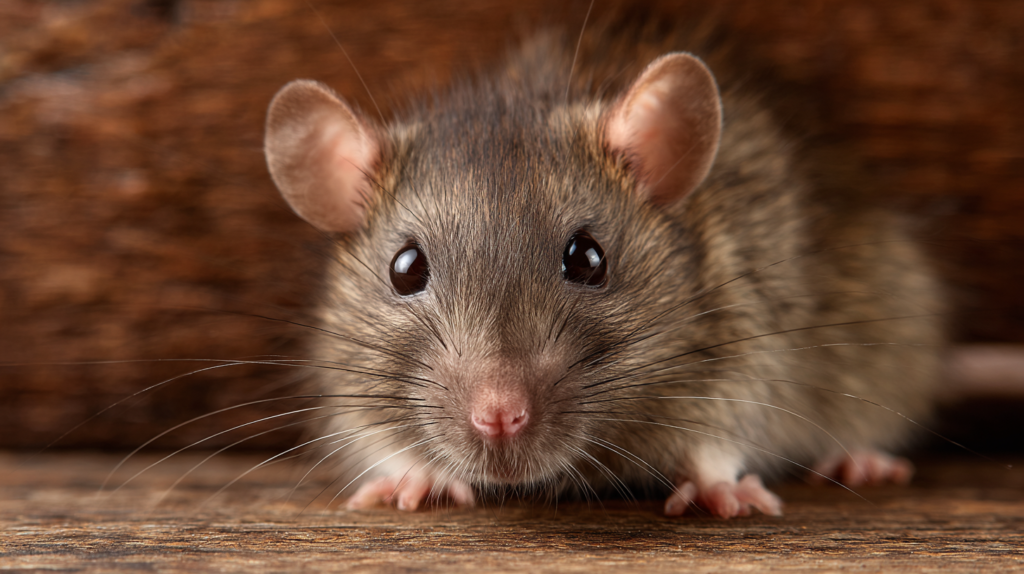
Diabetes mellitus in rodents occurs when the pancreas fails to produce adequate insulin or when the body becomes resistant to insulin’s effects. This metabolic dysfunction leads to elevated blood glucose levels, creating a cascade of health complications that can affect multiple organ systems. In small mammals, diabetes typically manifests as Type 1 (insulin-dependent) or Type 2 (non-insulin-dependent), with Type 2 being more common in pet rodents.
The prevalence of diabetes varies significantly among rodent species. Hamsters, particularly Chinese hamsters, show a genetic predisposition to diabetes, with studies indicating that up to 80% of certain laboratory strains develop the condition. Rats and mice can also develop diabetes, though it’s less common in well-cared-for pet populations. Guinea pigs rarely develop diabetes naturally, but when they do, it’s often associated with obesity or advanced age.
Several factors contribute to diabetes development in rodents. Genetics plays a crucial role, with certain bloodlines showing higher susceptibility. Obesity is another significant risk factor, as excess weight creates insulin resistance and places additional stress on the pancreas. Poor diet, particularly high-sugar or high-fat foods, can trigger diabetes in predisposed animals. Age also influences risk, with middle-aged to older rodents being more susceptible to developing the condition.
Environmental stress can exacerbate diabetes risk in rodents. Chronic stress elevates cortisol levels, which interferes with insulin function and glucose metabolism. Inadequate housing, poor nutrition, lack of exercise, and social isolation all contribute to stress-related diabetes development. Additionally, certain medications, particularly corticosteroids used to treat inflammatory conditions, can trigger diabetes in susceptible animals.
The 5 Powerful Signs of Diabetes in Rodents
5 Powerful Signs of Diabetes in Rodents
| Sign # | Symptom | Description | Severity | What to Watch For |
|---|---|---|---|---|
| 1 | Excessive Thirst & Urination | Polydipsia and polyuria – increased water consumption and frequent urination | High | Water bottle emptying quickly, wet bedding, frequent trips to water source |
| 2 | Increased Appetite with Weight Loss | Polyphagia – eating more food but losing body weight simultaneously | High | Empty food bowls, visible rib bones, loose skin, decreased body mass |
| 3 | Lethargy & Decreased Activity | Reduced energy levels, less playful behavior, sleeping more than usual | Medium | Less wheel running, reduced exploration, staying in one spot longer |
| 4 | Dental & Oral Health Issues | Overgrown teeth, difficulty eating, drooling, bad breath | Medium | Food left uneaten, wet chin area, visible tooth overgrowth |
| 5 | Skin & Coat Changes | Dull fur, thinning coat, slow healing wounds, skin infections | Moderate | Patchy fur loss, greasy or matted coat, visible skin irritation |
1. Excessive Thirst and Urination (Polydipsia and Polyuria)
The most recognizable sign of diabetes in rodents is dramatically increased water consumption coupled with excessive urination. Diabetic rodents may drink two to three times their normal water intake, emptying water bottles that previously lasted several days within 24 hours. This occurs because elevated blood glucose levels cause the kidneys to work overtime, filtering excess sugar from the blood and requiring additional water to flush it from the system.
Observing urination patterns in rodents requires careful attention to bedding changes and cage conditions. Diabetic animals produce significantly more urine, often with a sweet or fruity odor due to glucose spillage. The bedding becomes saturated more quickly, requiring frequent changes to maintain hygiene. In severe cases, you may notice sticky patches around the water bottle or food area where glucose-laden urine has dried.
Pet owners should monitor water consumption by measuring daily intake and noting any sudden increases. A healthy hamster typically drinks 10-15 milliliters of water per day, while a diabetic hamster may consume 30-50 milliliters or more. This dramatic increase often occurs rapidly, sometimes within a few days of diabetes onset, making it one of the earliest detectable symptoms.
2. Increased Appetite with Weight Loss (Polyphagia)
Diabetic rodents often display paradoxical eating behaviors, consuming significantly more food while simultaneously losing weight. This occurs because their cells cannot effectively utilize glucose for energy, creating a state of cellular starvation despite abundant food intake. The body responds by increasing appetite signals, driving the animal to eat more in an attempt to meet its energy needs.
Weight loss in diabetic rodents can be subtle initially but becomes pronounced as the condition progresses. Regular weekly weighing helps detect gradual weight loss that might not be visually apparent. A healthy adult hamster weighs between 100-150 grams, and a loss of 10-20% of body weight over several weeks warrants immediate veterinary attention.
The increased appetite may manifest as constant food seeking behavior, hoarding excessive amounts of food, or eating items they previously ignored. Some diabetic rodents become less selective about food choices, consuming bedding material or other inappropriate items in their desperate search for calories. This behavioral change often alarms owners who notice their previously well-behaved pet engaging in unusual eating patterns.
3. Lethargy and Decreased Activity
Energy depletion is a hallmark of diabetes in rodents, as their cells cannot efficiently convert glucose into usable energy. Previously active pets may spend increasing amounts of time sleeping, show reluctance to explore their environment, or display reduced interest in play and exercise. This lethargy often develops gradually, making it challenging for owners to recognize until the condition has progressed significantly.
Diabetic rodents may exhibit changes in their normal behavioral patterns. Nocturnal species like hamsters may become less active during their typical evening activity periods. Social rodents like rats may withdraw from cage mates or show decreased interest in human interaction. These behavioral changes often precede more obvious physical symptoms, making them valuable early warning signs for attentive owners.
The decreased activity creates a vicious cycle, as reduced exercise contributes to worsening insulin resistance and glucose control. Regular exercise helps improve insulin sensitivity and glucose uptake by muscles, making activity levels both a symptom and a treatment consideration for diabetic rodents. Encouraging gentle activity through environmental enrichment becomes an important management strategy.
4. Dental and Oral Health Issues
Diabetes significantly impacts oral health in rodents, as elevated blood glucose levels create an ideal environment for bacterial growth in the mouth. Diabetic animals are more susceptible to dental infections, gum disease, and tooth root problems. The condition can also affect the normal wear patterns of continuously growing teeth, leading to malocclusion and eating difficulties.
Owners may notice changes in eating behavior that suggest dental problems, such as dropping food, eating only soft items, or showing apparent pain while chewing. Excessive drooling, facial swelling, or visible tartar buildup on teeth can indicate diabetes-related oral health complications. Bad breath with a sweet or fruity odor may also be present due to ketosis, a serious complication of uncontrolled diabetes.
Regular dental examinations become crucial for diabetic rodents, as dental problems can worsen diabetes control by making proper nutrition difficult. Pain from dental issues can also increase stress levels, further complicating blood sugar management. Preventive dental care, including appropriate chew toys and regular veterinary check-ups, helps maintain oral health in diabetic pets.
5. Skin and Coat Changes
The skin and coat of diabetic rodents often reflect the underlying metabolic dysfunction. Poor glucose control affects protein synthesis and cellular repair mechanisms, leading to dull, brittle fur that may feel dry or coarse to the touch. Some diabetic rodents develop areas of hair loss or thinning, particularly around the face, neck, or hindquarters.
Slow healing of minor wounds or scratches is another concerning sign in diabetic rodents. The compromised immune system and poor circulation associated with diabetes impair the body’s ability to repair tissue damage. Small cuts or abrasions that would normally heal within days may persist for weeks or become infected, requiring veterinary intervention.
Skin infections, particularly fungal infections, occur more frequently in diabetic rodents due to the glucose-rich environment created by elevated blood sugar levels. Owners may notice red, inflamed areas, excessive scratching, or unusual odors emanating from the skin. These secondary infections can be painful and may require specific antifungal or antibiotic treatments in addition to diabetes management.
Smart Diet Management for Diabetic Rodents
Smart Diet Management Guide for Diabetic Rodents
| Food Category | Safe Options | Use with Caution | Avoid Completely | Serving Guidelines |
|---|---|---|---|---|
| Vegetables | Safe Leafy greens, broccoli, celery, green beans, cucumber |
Limited Carrots, bell peppers, peas |
Never Corn, potatoes, onions |
Small pieces daily, size of rodent’s ear |
| Fruits | Minimal Small berries (blueberries, raspberries) |
Rare treats Apple slices (no seeds), melon |
Never Grapes, bananas, dried fruits, citrus |
1-2 berries weekly maximum |
| Pellets | Recommended High-fiber, low-sugar pellets designed for diabetic pets |
Monitor Regular quality pellets |
Never Colorful, sugary, or fruit-flavored pellets |
1-2 tablespoons daily, divided into small meals |
| Hay & Fiber | Unlimited Timothy hay, orchard grass, meadow hay |
Limited Alfalfa hay (high in calcium) |
Never Moldy or dusty hay |
Fresh hay available at all times |
| Treats & Snacks | Occasional Plain rolled oats, sunflower seeds (1-2) |
Very rare Unsalted nuts, plain seeds |
Never Chocolate, candy, cookies, yogurt drops |
Once weekly maximum, tiny portions |
| Feeding Schedule | Best practice 3-4 small meals daily at consistent times |
Acceptable 2 larger meals daily |
Never Free-feeding or irregular meal times |
Same times daily, monitor intake closely |
Creating a Balanced Diabetic Diet Plan
Nutritional management forms the cornerstone of diabetes treatment in rodents, requiring careful attention to macronutrient balance, feeding schedules, and food quality. The primary goal is maintaining stable blood glucose levels while providing adequate nutrition for overall health maintenance. A well-designed diabetic diet should emphasize high-quality proteins, complex carbohydrates, and healthy fats while minimizing simple sugars and processed foods.
Protein requirements for diabetic rodents often increase to support tissue repair and maintain muscle mass during weight loss. High-quality protein sources include specially formulated diabetic pellets, small amounts of cooked chicken or fish, and protein-rich vegetables like broccoli and spinach. Protein should comprise 16-20% of the total diet for most diabetic rodents, with adjustments based on individual needs and veterinary recommendations.
Complex carbohydrates provide steady energy release without causing dramatic blood sugar spikes. Appropriate carbohydrate sources include timothy hay, small amounts of whole grains like oats or barley, and high-fiber vegetables. The timing of carbohydrate intake becomes crucial, with smaller, more frequent meals helping to prevent glucose fluctuations throughout the day.
Fiber plays a vital role in diabetic rodent nutrition by slowing glucose absorption and promoting satiety. High-fiber foods help regulate blood sugar levels and support digestive health. Appropriate fiber sources include timothy hay, which should be available constantly, and fibrous vegetables like celery, green beans, and leafy greens. The increased fiber content also helps manage weight by promoting feelings of fullness with fewer calories.
Feeding Schedules and Portion Control
Establishing consistent feeding schedules helps regulate blood glucose levels in diabetic rodents. Rather than allowing free-choice feeding, which can lead to glucose spikes, diabetic pets benefit from scheduled meals at regular intervals. Most diabetic rodents do well with two to three small meals daily, spaced evenly throughout their active periods.
Portion control becomes essential for weight management and glucose control. Measuring food portions ensures consistent caloric intake and prevents overeating. A typical diabetic hamster might receive 1-2 teaspoons of pellets per meal, supplemented with small amounts of approved vegetables. Adjustments to portion sizes should be made based on body weight changes and blood glucose monitoring results.
The timing of meals in relation to any prescribed medications requires careful coordination. If insulin therapy is necessary, meals should be timed to coincide with insulin peaks to optimize glucose utilization. This synchronization helps prevent both hyperglycemia and dangerous hypoglycemic episodes that can occur when insulin action exceeds available glucose.
Foods to Avoid and Healthy Alternatives
Several foods pose significant risks to diabetic rodents and should be completely eliminated from their diet. High-sugar fruits like grapes, bananas, and dried fruits can cause dangerous blood glucose spikes. Processed foods containing added sugars, artificial sweeteners, or high-fructose corn syrup should never be offered to diabetic pets.
Nuts and seeds, while nutritious for healthy rodents, are often too high in fat and calories for diabetic animals. These foods can contribute to weight gain and worsen insulin resistance. If treats are desired, safer alternatives include small pieces of cucumber, celery, or specially formulated diabetic treats available from veterinary suppliers.
Commercial rodent treats often contain excessive sugars and should be avoided in diabetic pets. Many popular treats like yogurt drops, honey sticks, and fruit-flavored chews can cause severe glucose elevation. Instead, owners can offer tiny pieces of approved vegetables or commercially available diabetic-friendly treats specifically designed for small mammals.
Healthy alternatives to traditional treats include fresh herbs like parsley, cilantro, or mint, which provide flavor variety without significant glucose impact. Small amounts of cooked vegetables like green beans or squash can serve as satisfying treats while contributing to overall nutrition. These alternatives help maintain the human-animal bond through treat-giving while supporting diabetes management goals.
Veterinary Diagnosis and Treatment Options
Complete Diagnosis & Treatment Timeline for Diabetic Rodents
| Timeline Phase | Diagnostic Tests | Treatment Options | Monitoring Frequency | Expected Outcomes | Estimated Costs |
|---|---|---|---|---|---|
| Initial Diagnosis Week 1-2 |
Blood glucose test Urine analysis Physical examination Weight assessment |
Immediate diet modification Stress reduction Environmental optimization Baseline glucose monitoring |
Daily Multiple glucose checks Weight monitoring |
Confirmation of diabetes Severity assessment Treatment plan development |
$50-150 Initial consultation & tests |
| Treatment Setup Week 2-4 |
Follow-up glucose monitoring Ketone level check Complete blood panel Organ function tests |
Insulin therapy initiation (if needed) Specialized diet implementation Medication dosage calibration Owner training |
Every 2-3 days Glucose monitoring Appetite tracking |
Stabilized blood sugar Improved symptoms Established routine |
$75-200 Medications & follow-ups |
| Stabilization Month 1-3 |
Weekly glucose curves Fructosamine levels Body condition scoring Dental examination |
Treatment refinement Diet optimization Exercise routine establishment Complication prevention |
Weekly Home glucose monitoring Vet check monthly |
Consistent glucose levels Weight stabilization Symptom improvement Better quality of life |
$40-80/month Ongoing medications |
| Long-term Management Month 3+ |
Quarterly glucose monitoring Annual comprehensive exam Complication screening Organ function assessment |
Maintenance protocols Preventive care Lifestyle modifications Emergency preparedness |
Every 3-6 months Regular vet visits Home monitoring as needed |
Stable condition Normal activity levels Prevention of complications Extended lifespan |
$30-60/month Maintenance care |
| Emergency Response As needed |
Immediate glucose check Ketone testing Vital signs assessment Blood gas analysis (if critical) |
IV fluid therapy Emergency insulin Hospitalization Intensive monitoring |
Continuous Until stabilized 24-hour observation |
Crisis resolution Return to baseline Adjusted treatment plan |
$100-300 Emergency intervention |
| Quality of Life Assessment Ongoing |
Behavioral evaluation Pain assessment Mobility testing Appetite monitoring |
Comfort measures Pain management Environmental enrichment End-of-life planning |
Monthly Owner observation Vet consultation as needed |
Maintained comfort Preserved dignity Informed decisions Peace of mind |
$25-50 Quality assessments |
Diagnostic Procedures and Tests
Diagnosing diabetes in rodents requires specialized veterinary knowledge and appropriate diagnostic equipment. The initial evaluation typically includes a complete physical examination, focusing on signs of dehydration, weight loss, and potential complications. Blood glucose testing forms the cornerstone of diagnosis, though obtaining adequate blood samples from small rodents can be challenging.
Veterinarians may use various methods to collect blood samples from rodents, including tail vein puncture, lateral saphenous vein access, or cardiac puncture under anesthesia. The stress of blood collection can artificially elevate glucose levels, so experienced veterinarians often use techniques to minimize handling stress. Some clinics use glucometers designed for human use, while others employ laboratory-grade equipment for more precise measurements.
Urine testing provides valuable supplementary information about glucose control and the presence of ketones, which indicate serious metabolic complications. Collecting urine samples from rodents requires patience and sometimes involves placing the animal in a clean, empty cage for a short period. Positive glucose in urine typically indicates blood glucose levels exceeding 180-200 mg/dL, suggesting diabetes.
Additional diagnostic tests may include complete blood chemistry panels to assess organ function, particularly kidney and liver health. These tests help identify diabetes-related complications and guide treatment decisions. Some veterinarians also perform fructosamine tests, which provide information about average blood glucose levels over the preceding 2-3 weeks, offering a more comprehensive picture of glucose control.
Treatment Approaches and Medication Management
Treatment of diabetes in rodents often begins with dietary management and environmental modifications before considering medication. Many cases of early diabetes in rodents respond well to strict dietary control, weight management, and stress reduction. This conservative approach is particularly important given the challenges of medicating very small animals.
When medication becomes necessary, insulin therapy remains the gold standard for diabetic rodents. However, dosing insulin for animals weighing less than 100 grams requires extreme precision and specialized knowledge. Veterinarians typically use ultra-fine insulin syringes and may dilute insulin to achieve appropriate dosing. Long-acting insulin preparations are often preferred to minimize the number of daily injections.
Oral hypoglycemic medications used in human diabetes treatment have limited application in rodents due to their small size and different metabolism. Some veterinarians experiment with liquid formulations of medications like metformin, but these treatments remain largely experimental and require careful monitoring.
Alternative treatments may include dietary supplements that support glucose metabolism, such as chromium or alpha-lipoic acid. However, these supplements should only be used under veterinary supervision, as dosing for very small animals can be challenging and their effectiveness in rodents is not well-established.
Monitoring and Long-term Care
Successful diabetes management in rodents requires ongoing monitoring and regular veterinary follow-up. Home glucose monitoring, while challenging, can provide valuable information about treatment effectiveness. Some owners learn to collect small urine samples for glucose testing, which is less stressful than blood collection and can indicate overall glucose control trends.
Weight monitoring becomes a crucial component of long-term care, as weight changes often reflect diabetes control quality. Weekly weighing helps detect problems early, allowing for prompt treatment adjustments. A stable weight within the normal range for the species indicates good diabetes control, while continued weight loss or gain suggests the need for treatment modifications.
Regular veterinary check-ups, typically every 3-6 months, allow for comprehensive health assessments and treatment adjustments. These visits may include blood glucose testing, physical examinations, and evaluation of potential complications. Early detection of problems like dental disease, skin infections, or organ dysfunction enables prompt intervention and better outcomes.
Environmental Management and Lifestyle Modifications
Creating a Stress-Free Environment
Environmental stress significantly impacts blood glucose control in diabetic rodents, making stress reduction a crucial component of management. A calm, predictable environment helps minimize cortisol release, which can interfere with insulin function and glucose regulation. This means maintaining consistent daily routines, minimizing loud noises, and avoiding frequent cage relocations.
Appropriate housing becomes even more important for diabetic rodents. Adequate space for exercise, proper ventilation, and comfortable temperature ranges all contribute to stress reduction. The cage should be large enough to allow natural behaviors while being easily accessible for monitoring and care. Hiding places and nesting materials provide security and comfort for stressed animals.
Lighting schedules should respect the natural circadian rhythms of the species. Most rodents are nocturnal or crepuscular, meaning they’re most active during dawn and dusk hours. Maintaining appropriate light-dark cycles helps regulate natural hormone production and supports overall health. Disrupted sleep patterns can worsen glucose control and increase stress levels.
Social considerations vary by species but remain important for diabetic rodents. Social species like rats benefit from companionship, while solitary species like hamsters may become stressed by forced social interaction. Understanding species-specific needs and providing appropriate social environments supports overall well-being and glucose control.
Exercise and Activity Promotion
Regular exercise plays a vital role in diabetes management for rodents, improving insulin sensitivity and glucose uptake by muscles. However, diabetic animals may have reduced exercise tolerance, requiring careful activity planning. Gentle, consistent exercise is more beneficial than sporadic intense activity, which can cause dangerous glucose fluctuations.
Providing appropriate exercise opportunities requires species-specific considerations. Hamsters benefit from properly sized exercise wheels, while rats enjoy climbing structures and tunnels. Guinea pigs need floor space for walking and exploring. The exercise equipment should be safe, appropriately sized, and regularly cleaned to prevent injury or infection.
Supervised play time outside the cage can provide additional exercise opportunities while strengthening the human-animal bond. However, diabetic rodents may tire more easily and require closer monitoring during these activities. Signs of fatigue, such as rapid breathing or reluctance to move, indicate the need for rest.
Environmental enrichment that encourages natural behaviors can promote activity without feeling like forced exercise. Foraging opportunities, puzzle feeders, and exploring novel objects all encourage movement while providing mental stimulation. These activities help prevent boredom and depression, which can worsen diabetes control.
Complications and Warning Signs
Recognizing Diabetic Emergencies
Diabetic rodents face several potential emergency situations that require immediate veterinary attention. Diabetic ketoacidosis (DKA) represents the most serious complication, occurring when the body breaks down fat for energy in the absence of usable glucose. This condition can be life-threatening within hours and requires aggressive treatment.
Signs of DKA include severe lethargy, vomiting, diarrhea, dehydration, and a sweet or fruity odor to the breath. The animal may appear weak, show labored breathing, or become unresponsive. Any diabetic rodent showing these signs requires emergency veterinary care, as DKA can be fatal without prompt treatment.
Hypoglycemia, or dangerously low blood sugar, can occur if insulin doses are too high or if the animal doesn’t eat adequately. Signs include weakness, trembling, confusion, seizures, or collapse. Emergency treatment involves providing quick-acting sugar sources like honey or corn syrup, followed by immediate veterinary care.
Severe dehydration can develop rapidly in diabetic rodents, particularly during illness or if water access is limited. Signs include sunken eyes, dry mouth, poor skin elasticity, and lethargy. Dehydrated animals require immediate fluid therapy, which may need to be administered intravenously or subcutaneously by a veterinarian.
Secondary Health Complications
Diabetes increases the risk of numerous secondary health problems in rodents. Urinary tract infections occur more frequently due to glucose in the urine, creating an ideal environment for bacterial growth. Signs include frequent urination, straining, or blood in the urine. These infections can be painful and may worsen diabetes control if left untreated.
Skin and wound healing problems commonly affect diabetic rodents. Minor cuts or abrasions may heal slowly or become infected. Owners should monitor any wounds closely and seek veterinary attention if healing appears delayed or if signs of infection develop. Proper wound care and sometimes antibiotic treatment may be necessary.
Dental complications can arise from diabetes-related changes in healing and immune function. Tooth root infections, gum disease, and abnormal tooth wear may develop. Regular dental examinations help detect these problems early, and prompt treatment prevents pain and eating difficulties that can worsen diabetes control.
Cardiovascular complications, while less common in rodents than in larger animals, can occur with long-standing diabetes. These may include changes in heart rhythm or function, which can be detected during routine veterinary examinations. Early detection and management of cardiovascular problems help maintain quality of life.
Prevention Strategies and Risk Reduction
Genetic Considerations and Breeding
Understanding genetic predispositions to diabetes helps responsible pet owners make informed decisions about breeding and pet selection. Certain bloodlines and species show higher diabetes susceptibility, making it important to research breeding history when acquiring new pets. Reputable breeders should be aware of diabetes history in their breeding lines and be willing to discuss health concerns.
Avoiding breeding animals with diabetes or from diabetic bloodlines helps reduce the incidence of the condition in future generations. This is particularly important for species like Chinese hamsters, where diabetes has a strong genetic component. Responsible breeding practices include health testing breeding animals and maintaining detailed health records.
For pet owners not involved in breeding, selecting pets from reputable sources with known health histories can reduce diabetes risk. Avoiding puppy mills or pet stores that cannot provide health information about breeding animals helps ensure healthier pets. Rescue organizations often have health information about available animals and can provide guidance about special needs pets.
Nutritional Prevention from Early Age
Establishing healthy eating habits from a young age helps prevent diabetes development in susceptible rodents. Young animals should receive species-appropriate diets with proper nutrient balance, avoiding high-sugar treats and processed foods. Early dietary discipline creates lifelong healthy eating patterns.
Preventing obesity through proper portion control and regular exercise is crucial for diabetes prevention. Overweight young animals are more likely to develop diabetes as adults, making weight management a lifelong priority. Regular weighing and body condition assessment help maintain appropriate weight ranges.
Avoiding foods known to increase diabetes risk, such as high-fat or high-sugar items, should begin early in life. This includes avoiding commercial treats with artificial sweeteners, dried fruits, and nuts. Establishing healthy treat alternatives early helps prevent the development of preferences for inappropriate foods.
Educational resources about proper rodent nutrition can help new pet owners make informed dietary decisions. Veterinary nutritionists and experienced rodent veterinarians can provide species-specific feeding guidelines and help design appropriate diets for growing animals.
Living Successfully with a Diabetic Rodent
Managing diabetes in rodents requires dedication, patience, and a comprehensive understanding of the condition’s complexities. Success depends on early recognition of symptoms, prompt veterinary intervention, and consistent long-term management. While the diagnosis may initially seem overwhelming, many diabetic rodents live happy, comfortable lives with proper care and attention.
The key to successful diabetes management lies in establishing routines that support stable blood glucose levels while maintaining your pet’s quality of life. This includes consistent feeding schedules, appropriate exercise opportunities, stress reduction, and regular monitoring. Building a strong relationship with a veterinarian experienced in rodent medicine provides essential support for navigating treatment challenges.
Education plays a crucial role in successful diabetes management. Understanding your pet’s specific needs, recognizing warning signs of complications, and staying informed about treatment advances helps ensure the best possible outcomes. Many resources are available through veterinary associations, small animal specialty groups, and online communities dedicated to rodent health.
The emotional aspects of caring for a diabetic pet shouldn’t be overlooked. The daily commitment required for diabetes management can be challenging, but the reward of maintaining your beloved companion’s health and happiness makes the effort worthwhile. Support from veterinary professionals, fellow pet owners, and online communities can provide encouragement and practical advice throughout the journey.
Frequently Asked Questions
Everything you need to know about diabetes in rodents
No questions found matching your search. Try different keywords or browse all questions above.
For more expert pet care tips and product recommendations, visit BlithePet.com — your trusted source for pet wellness.
Conclusion
Diabetes in rodents represents a manageable but serious health condition that requires informed, dedicated care. By recognizing the five key warning signs—excessive thirst and urination, increased appetite with weight loss, lethargy, dental problems, and skin changes—pet owners can seek prompt veterinary attention and begin appropriate treatment. Smart dietary management, including careful food selection, portion control, and feeding schedules, forms the foundation of successful diabetes control.
The journey of caring for a diabetic rodent involves learning new skills, establishing routines, and maintaining vigilance for potential complications. However, with proper knowledge, veterinary support, and consistent care, diabetic rodents can continue to bring joy and companionship to their families. Early detection, appropriate treatment, and ongoing management make the difference between a shortened, uncomfortable life and years of happy, healthy companionship.
Remember that every diabetic rodent is unique, and treatment plans should be tailored to individual needs and circumstances. Regular communication with your veterinarian, careful monitoring of your pet’s condition, and willingness to adjust management strategies as needed contribute to the best possible outcomes. With dedication and proper care, your diabetic rodent can thrive despite this chronic condition.
Have a similar experience with your pet? Share it in the comments below!


